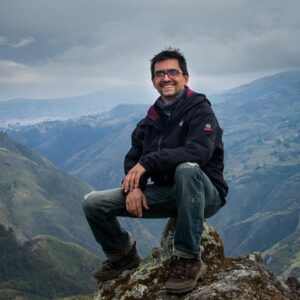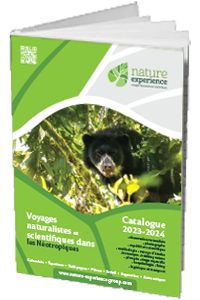Your travel expert
Emma Laforge
Discovery and family travel advisor

Explore the changing landscapes, from the snow-capped peaks of the Antisana paramos to the low, cloudy subtropical forests of the east.
Quito is one of the best gateways to the Amazon. The Cinnamon Road, first discovered by Western explorers in the 16th century, invites you to explore the eastern foothills of the Andes. Set off to explore the changing landscapes of these Andean regions, from the snow-capped peaks of the Antisana páramos to the low, cloudy subtropical forests of the east, while following the most beautiful rivers which feed into the rich Amazon basin.
Early in the morning, our guide will collect you from your hotel. We will head for the eastern region of the Ecuadorian Andes. Our first stop will be the Antisana highlands. We'll explore the many ecosystems of this 120,000-hectare ecological reserve. The unique landscape of this alto-Andean reserve is an ideal place for Condor spotting. Keep your eyes peeled as we cross the grassy páramo plains! Here we'll be looking for large mammals such as the white-tailed deer and the magellanic fox. We'll then stop off at the Mica Lagoon to try and spot some species of waders and other water birds. On our way back to the more basic areas of shrubby páramo, we'll take a moment to scan the vastness of these valleys in search of the rare and enigmatic spectacled bear.
Specialist guide, transport, entrance to reserves.
After breakfast, we'll resume our search for Condors. Then we'll descend along the Cinnamon Road to the Guango Cloud Forest for lunch and a walk through the breathtaking hummingbird gardens! Don't forget to photograph the Sword-billed hummingbird, the Tourmaline Sunangel and the Collared Inca. After lunch, make your way to the Papallacta river to see the Torrent Duck, Jays and Tanagers. This riverbank is also a paradise for orchid lovers.
We will then walk along the banks of the Quijos river towards the San Isidro reserve. Here, we spend two nights in the comfortable San Isidro lodge. If you wish, you can join us for an evening hike after dinner.
Specialist guide, transport, entrance to reserves.
San Isidro's misty air provides a haven for moss, orchids and bromeliads, as well as the tree frogs, birds and small mammals that depend on them. In the afternoon, we'll walk to the Yanayacu scientific station and do some birdwatching along the way. You will have the opportunity to listen to the station's resident scientists as they inform us about their research and conservation projects. We'll also learn about the reproductive behaviour of local bird species, as well as butterfly adaptations to parasites. We’ll end the day with a dip in Papallacta's soothing thermal springs and spa.
Specialist guide, transport, entrance to reserves.
In the morning, enjoy a second dip in the Papallacta hot springs and hike to the border of the Cayambe-Coca reserve. This is an ideal spot for observing high altitude plants and wildlife. We return to Quito after lunch. On the way back, we'll make a number of stops to admire the breathtaking scenery of the Andes.
Expect a late afternoon arrival in Quito.
Specialist guide, transport, entrance to reserves.
Departures all year round.
You want a personalized departure date? Contact us. Request a personalized date
You are a group of travelers and want a special rate? Contact us. Request a personalized quote
Itineraries may be subject to last-minute changes due to natural disasters or changes in national legislation. The operator therefore reserves the right to make any changes necessary to guarantee the safety and integrity of travellers and to comply with the laws in force. Hotels are given for information only and are subject to availability at the time the tour is booked. In the event of unavailability, a hotel of the same category will be offered where possible.
Formalities: Passport valid for 6 months after your return date. No visa is currently required for French and Belgian nationals.
Vaccinations: It is advisable to be vigilant when travelling, particularly during the rainy season (when infectious outbreaks can occur) in the coastal provinces and in Amazonia. Malaria is a parasitic disease transmitted by mosquito bites, requiring the use of personal protective measures such as sprays, creams, electric diffusers and mosquito nets. Quito and the centre of the country are not affected by malaria. In fact, very few areas are really affected by these parasitic diseases. Most of these high-risk areas are not in the zones we visit on our itineraries. If, however, you decide to take a course of treatment, beware: some people react badly to it. Although no vaccinations are compulsory, we recommend that you consider vaccinations against tetanus and hepatitis A and C to be essential. We also recommend that you consult your GP before leaving and take out insurance to cover medical expenses and repatriation.









Travel theme |
Naturalist observations, photography and ornithology |
|---|---|
Arrival city |
Quito |
Departure city |
Quito |
Accommodation |
Hotels, Lodges and Charming Hacienda |
Transport |
Private transport |
Physical condition |
Moderate (some walks at altitude, although slow, can be tiring) |

